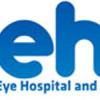“You will need to undergo an eye test called Pachymetry.”
We often find ourselves at the wrong end of the sword called medical jargon. In this age of the internet we have complete access to information about symptoms and what they mean. Whenever we find that we have an eye problem, we arm ourselves with this knowledge beforehand and confidently step into an eye hospital. However, our confidence soon thins out when the eye doctor mentions a battery of tests that need to be done.
We find ourselves sceptical of what those foreign sounding tests mean. ‘What is it done for? Is it really necessary? Is my eye doctor suspecting some serious disease?’ The mere mention of additional testing stirs up a hornet’s nest of questions in our mind.
Here are a few common eye tests that one may come across in an eye hospital:
- Slit Lamp: This is a microscope which helps examine our eyelids, tear film layer and cornea (outer transparent dome)
- Humphrey Field Analyzer: This helps measure the loss in your visual field in diseases like glaucoma. Glaucoma gradually reduces our peripheral field of vision, sometimes without us realising it. This helps identify the degree of the damage to peripheral vision.
- IOL Master: This is used to measure length of the eyeball and curvature of the cornea which is useful before cataract surgery in an eye hospital. This helps determine the power of the artificial lens that will be used in surgery.
- Pachymeter: This helps obtain the thickness of the cornea. This helps ensure that the thickness of cornea is within acceptable safety limits before corneal surgery. A measurement of the corneal thickness also gives an accurate measurement of eye pressure.
- A/ B Scan: A scan helps assess the length of our eyeball. B Scan gives a cross sectional view of the eye. These tests help when cataract or clouding in the back chamber of the eye prevent a doctor from viewing inside the eye. This helps detect bleeding or growths in the back of the eye, detachment of the retina etc.
- Corneal Topography: This is useful to obtain a 3D map of the corneal surface. This is useful in a number of diseases in which the corneal surface is affected like Keratoconus, corneal transplantation, corneal scarring, planning for refractive surgeries etc.
- Optical Coherence Tomography: This helps obtain cross sectional pictures of the retina and front chamber of the eye.
- Retinal Acuity Meter: This helps us know about the affection of the retina in diseases like cataract, glaucoma, macular disease etc.
So the next time you have to visit any eye hospital in India, whether it be an eye hospital in Panvel, Vashi, Sanpada or Kharghar, you can walk into the eye hospital with the assurance that no medical jargon can surprise you!
Article Source :
http://www.veethi.com/articles/decoding-tests-in-eye-hospitals-article-2292.htm
Keywords :
Eye specialist Mumbai
,
Laser eye surgery Mumbai
,
Eye specialist Vashi
,
Eye hospital Panvel
,
Eye specialist Panvel
,
Eye hospital India
,
Best eye hospital India



